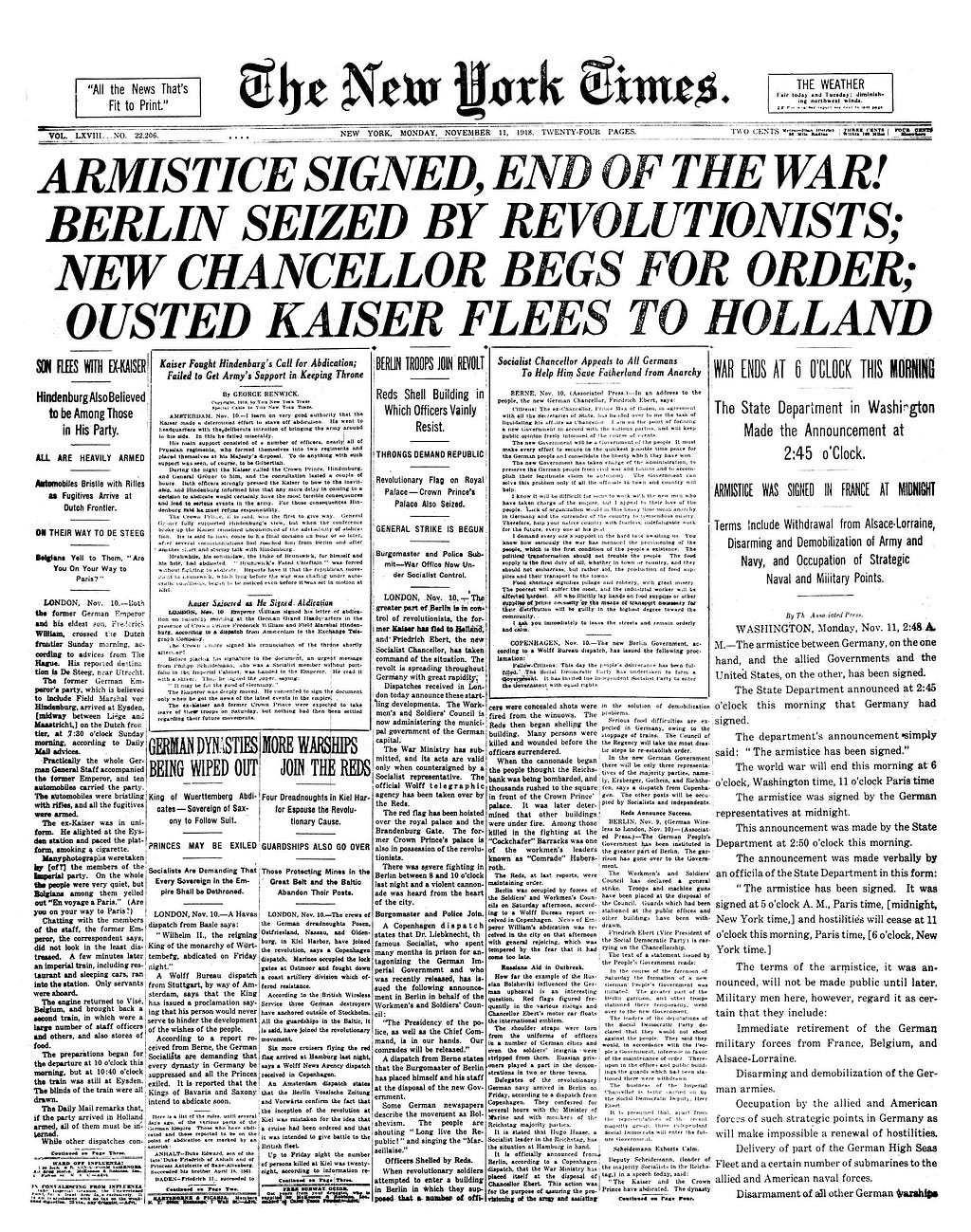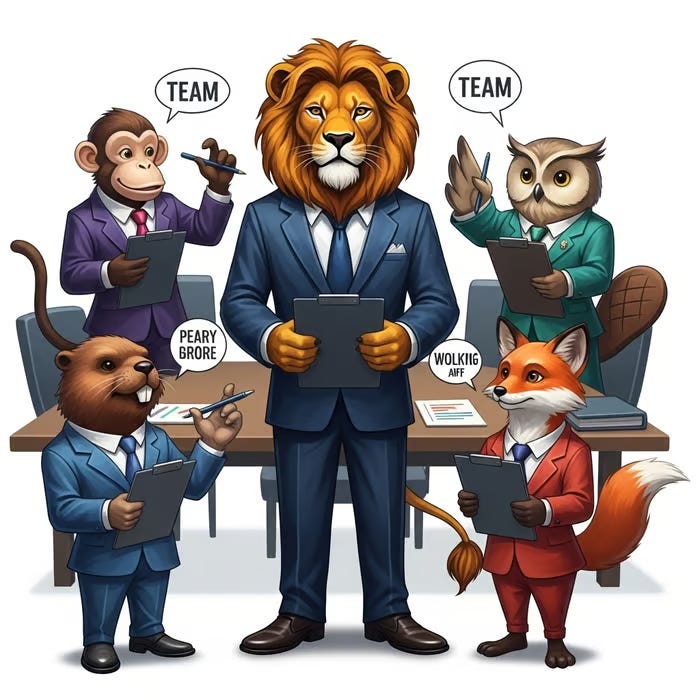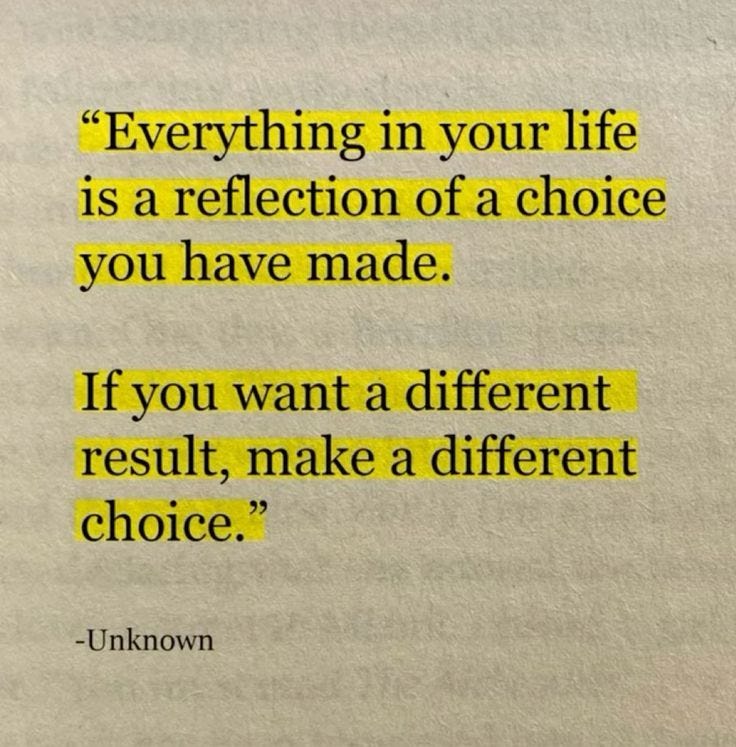Against images as accessories
Today, too many images are little more than filler and bait.
It feels like almost all text published online today needs an image with it. White paper, blog post, social post, news article: these things must have an image with them to survive — how do you expect your writing to reach people by throwing away all the engagement that images give you?
But, obviously it wasn’t always like this. See below an image of the cover of the New York Times on armistice day 1918:

And a screenshot from CNN from today, October 11 2025:*1

It wasn’t always like this, and we apparently managed to get information before. It wasn’t perfect, but we managed.
What are accessory images?
You might be thinking, “But I, or someone I know, sometimes finds these images useful.” Indeed: my disagreement is primarily with images whose nature is not to give you information in themselves, but which act as bait or filler.
So what are accessory images? Here’s a test: let’s say that an article you have written is being recognized in some way — such as receiving an award, being used for training, etc. Under what circumstances would you include the accompanying image?
For instance, if your article was about hacking and your editor had added a stock photograph of an unidentified man in a hoodie on a computer, would you submit that image along with the article for recognition by a prize? Or as a materially important part of the article for training purposes?
Such images — often stock or AI slop (all of which I shall discuss below) — are an insult to the visual crafts like photography and painting. These images don’t matter in themselves; rather they are just there to fill space or draw people to something actually important (or profitable). They are an accessory to the crime of clickbait.
They thus distort our networks and our information environment:
- The article most read should be the most interesting one, not the one with the most distracting image.
- Conversely, our social networks are today brain-addling filler images whose only characteristic is existing.
Any medium can be an accessory: images are special to me because they are the normal accessory to my primary medium, text. But so can text be an accessory, as can music: see “stock music” or (trade name) Musak.
Careless taste
Where are all these images coming from? Apparently, at least one person asked the question: “Now we can easily deliver images over the Internet, where can we put them? Why not have an image with every article on our website, and every preview in our article listing page, and every preview on our social network feed.”
Of course, it wasn’t long before you need your thing to have a preview/featured image for it to go anywhere online: anything without a featured image will be at disadvantage. Now, images are for the most part compulsory.
This has led to two overlapping phenomena:
Slock
Slock images are created to fill the gap, they’re usually either stock photography (iStock, Getty, etc.) or AI-generated (slop) — hence “slock.” These images are most popular among stressed-out content managers, writers, and people trying to get somewhere on LinkedIn.
These people are told — explicitly by managers, or implicitly by the networks, that every piece of writing needs an image. Then begins the panicked process of finding one: note that for any writer paid by the article (not the hour) this wasted time is quite painful.
This brings forth a rogue’s gallery of trash:
We have of course the corporate-looking stock, like this mysterious person who pops up everywhere:

Then the figures:

And of course the recent AI slop:

Slop is more insidious than stock. Now that people can create images quickly with AI, the problem of finding something relevant is solved, superficially.
For example, a colleague of mine wrote a good article on “Excel Hell” — Copilot dutifully made him an image of a man standing in a burning room surrounded by floating tables in Excel-brand green.
Relevant? From the perspective of someone with no concept of a spreadsheet (and therefore of Excel Hell), yes.
Useful, clarifying, aesthetically pleasing? No, and so lacking in these qualities that it threatens to tear the mind to shreds.
This comes with uncountable problems, including:
- The disturbing nature of the pictures, and their universally crass and/or cheesy persona
- The environmental impact immense power required to create them (remember that the vast majority of these images are pointless)
- The overproduction of real-enough looking images such that it’s becoming hard to know what’s real
Bait
As I suggested above, the overabundance of images has turned our media from places where we read and explore and decide what we wish to learn more about, to places where we scroll — barely consciously — browsing until something jolts us enough to pause or click.
We used to explore, now we doomscroll. In this environment, people obviously use images as a tool to snap people out of it — or deeper into it, depending on your perspective.
This of course gives us the shock face:

And, with the medium curling back on itself, the fake quote, usually shop sign or imagined book:

As mentioned earlier, there’s a lot of overlap between slock and bait.
We must demand to know, in all these cases, what we the readers/listeners/watchers gain from this. Were the images and hence gasping faces absent — leaving just the title, account ID and a description — would we all say, “all this needs is someone faking surprise”?
Proposals
So, what do we do about it? Here are some ideas:
Text-only mode (perhaps by default in some cases)
- All hypertext systems that have a text mode, and should provide a facility for the user to use that mode only, i.e. show text only.
- Users should be able to suppress images ad hoc, or everywhere, at particular times, on particular Internet domains, etc. Ideally, online media would be made to look good without the images.
- One might build, for instance, a text-only social media platform, where images are never shown unless one accesses the particular post where they’re found.
- These settings would be organized as a fractal, with any entity at any level of abstraction capable of setting this parameter.
- For instance, the moderators of a given community on a given social network could set the default setting for the visibility of images, but individual users always have final control.
One, the other, or both
- To dam the production of slock images, publications or we could create a rule something like the following: a post can be previewed either as text (showing the title, author and a snippet) or as image (showing a the title, author, and a thumbnail).
- This way any writer, photographer and publication must make the hard choice: does this image stand alone, or is it merely bait or wallpaper for the accompanying text?
There is of course the question of what to do with media that has both a legitimate text and image component. I say we create the category, e.g. multimedia feature/comic-book and in such cases preview with an image. This type might have to be prohibited or creatively governed in many freely accessible social media, because it presents the opportunity for skullduggery.
Accessory media (and particularly images) are a disease of luxury. It’s only because our computers are this powerful and our networks fast that it is even possible. It was different not so long ago, and it changed without, apparently, giving us enough time to built norms to deal with it.
You might be saying, “But accessory images are a result of human nature/the market, it’s out of our hands.”
True about human nature and the market, but this fact means we know how to change things. A market is a system — one might say — which determines outcomes via profit and loss. We need to make it pay to build networks that encourage people to be honest with their images.
We should, therefore:
- Seek out, patronize and build social networks with more sensible policies around images.
- Remind people that images of the sort above are in poor taste.
- Never click on a link with an accessory image.
- Never voluntarily use an accessory image.
Let’s shake off the ennui of learned helplessness and take back our media. Slock-bait is deranging, depressing and distracting: let’s get rid of it. Contrary to popular (usually subconscious) belief, the nature of technological culture is not just the way it is but a function of our decisions, norms and tastes. Let’s quit, therefore, while we still have some control left.
1 I’m not claiming that this is an exact comparison, only that CNN is widely used and representative of our obsession with images.
Against images as accessories was originally published in UX Collective on Medium, where people are continuing the conversation by highlighting and responding to this story.
This post first appeared on Read More

